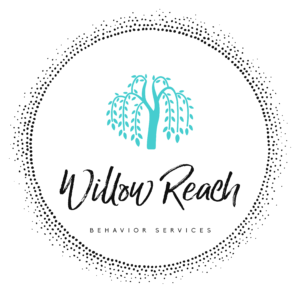What if every action your child takes today contributes to shaping his bright future?
As a parent under the umbrella of autism therapy, you may find yourself getting caught in a whirlpool of emotions: hope, apprehension, enthusiasm, and perhaps disbelief.
Several other families are also following the same path as yours, which involves both trying to understand the child’s world in greater detail and discovering what best supports their growth.
In this context, our emphasis also extends to ABA therapy. Too often, we lose sight of or sacrifice how we track progress and document the journey in favor of technical jargon. These documents are not forms.
Your child needs to present these stories, written in numbers and scribbles, with caution and clarity.
Here’s something positive: In 2022, a study that was published in Behavior Analysis in Practice observed that children who are provided with high-quality and customized ABA therapy in center-based environments experience large-scale growth in adaptive behavior skills within a 6-month period.
Also, what we observe is that the parents’ role is that of an active participant and informant, which in turn does play a significant role.
Additionally, your significance in this matter may be greater than you realize.
This blog is yours to have faith, encouragement, and empowerment as we share center-based ABA therapy progress and reporting. We feel tracking progress is like winning the small victories that make for significant changes.
How Progress Is Tracked in Center-Based ABA Therapy
When your child begins ABA therapy at a center, you will hear discussions about “data collection” and “ABA reporting” that may seem clinical at first, but in reality, these approaches have the benefit of helping all parents and therapists assess your child’s actual progress.
The objective may range from teaching your child to obey simple commands to improving communication to removing some challenging behaviors or to doing better with some routines of the day.
Also, during each session, therapists provide very close attention to your child’s behavior and keep track of which goals they are making or not.

This goes beyond simply crossing items off a list. It is living and recording real and meaningful moments, the small wins that build over time. When your child says a new word, uses a gesture to get a message across, or waits their turn in a game, that is progress. It is monitored closely so everyone can see what’s trending and what we need to work on.
This type of tracking is referred to as ABA progress monitoring, which is conducted daily. The therapists use measurements like graphs and behavior logs to calculate trends — are some of the goals being met more? Are new behaviors breaking through? That information in return helps your child’s therapy team make beneficial future decisions.
Inside an ABA Therapy Report: What Parents Can Expect
If you’ve at some point received an ABA report and you’ve found yourself thinking, what in the world does it all mean?
These reports have a lot of data, which is good, but it can be hard to understand. We’ll go through them one by one, and by the end, you’ll know how to read and interpret them.
An ABA therapy report is a journal documenting your child’s progress throughout the behavior therapy process. They are given every so often monthly or quarterly and are intended to keep you current with your child’s progress, setbacks, and scheduled events. They serve more than just professionals. They are for you as well.
The following are what most center-based ABA therapy reports contain:
- Summary of Goals: Report on what skills and behaviors your child is practicing that address communication, self-help, social interaction, and problem behavior reduction.
- Progress Overview: Data that provides an overview of your child’s progress on each goal; this may include percentages, mastery levels of skills, or time trends.
- Behavior Monitoring: Think about how we are handling challenging behaviors, which one is happening with regularity and what interventions we’re implementing.
- Therapist Notes: That gives a clearer picture of the manner in which your child reacted emotionally, what motivated them, and where they strained.
- Recommendations: Plan changes may include detailing new goals based on your child’s progress.
These reports talk beyond figures. They talk of a narrative, a very human one, of how your child is learning and growing in real time.
If you do not feel comfortable, please ask for help. Your ABA team is present to make you feel like you belong. We provide reports that we hope you will find helpful in monitoring your child’s ABA progress and then feel more empowered to advocate for their needs.
How Parents Can Actively Participate in Progress Monitoring
Center-based ABA therapy is excellent because it helps the family, not just the child. How do you get involved with the ABA therapy progress?
- Go to Parent Meetings and Check-Ins
Your child’s ABA team may have a weekly update meeting for their ABA therapy. It’s an excellent opportunity to voice your concerns, exchange household updates, and ensure alignment with the action plan.
Additionally, you can highlight aspects that may not be reflected in the data, such as an increase in social interactions during play or the fact that your child is now using 3-word sentences at dinner.

On occasion, they will also do a monthly review that is incredibly helpful to fill in what you are seeing at home, problems that have surfaced, or the success of a particular strategy. It’s open communication for everybody.
2.Talk Through What You Observe
You can share your observations with the treatment team when they can’t supervise, like at home, in the park, or with siblings. You can highlight what you observe in those settings to the team, allowing your team to adapt goals that better align with your child’s strengths and needs.
3.Practice At Home To Improve
Most therapists also suggest home practice to reinforce the skills your child is learning. You don’t necessarily have to have full therapy sessions at home, just little things like giving instructions, waiting for a response, or sharing little successes.
4.Stay tuned in and curious
Please identify the areas of the ABA reports that you find unclear; you need input from your BCBA. Remember, you’re on the team, not on the sidelines. When parents and therapists collaborate, the results of autism behavioral therapy go through a remarkable transformation.
What’s Typically Included in an ABA Therapy Progress Report?
| Section | What It Means | Why It Matters |
| Client Information | Basic details like name, age, diagnosis, and therapy hours | Helps personalize the plan and track history |
| Current Goals | The behavioral, social, or communication skills your child is working on | Shows focus areas in your child’s current therapy |
| Progress Summary | Data or notes on how your child is doing with each goal | Provides a snapshot of improvement or challenges |
| Behavior Tracking | Information on challenging behaviors and responses used | Helps understand patterns and adjust strategies |
| Therapist Notes | Observations from the therapy team, written in plain language | Offers insights that numbers alone can’t show |
| Recommendations | Suggestions for next steps or adjustments | Guides the path forward in your child’s therapy |
ABA Services at Willow Reach ABA
At Willow Reach ABA, we believe every child has the right to thrive in an environment that suits their needs. We provide both in-home and center-based ABA therapy services that we have taken great care to design to support children with Autism Spectrum Disorder and their families.

1.In-Home ABA Therapy Services
Willow Reach ABA offers home-based ABA therapy. We have an expert staff who operate in proximity to families to create a very nurturing and stimulating environment, which in turn allows children to learn necessary skills at their pace. We also view this approach as a means to track progress while simultaneously integrating treatment into daily life.
2.Center-Based ABA Therapy Services
As a reaction to high demand, we are seeing the opening of our new center-based ABA therapy program at Willow Reach ABA. This new facility we have designed will provide a safe, structured, and engaging experience for children that will, in turn, lead them to hands-on learning, social interaction, and personalized programs. We are striving at this facility to be a step towards complete development and well-being in every child.
3.A Whole Child Approach
In family relationships, social interactions, educational development, community membership, and emotional well-being, we observe that they have developed integrated care that fosters the overall development and well-being of all children in their care.
Choosing Willow Reach ABA is to join a team that is strongly dedicated to assisting your child to grow and to enhance their life with what can be.
Questions to Ask During Report Discussions
During your sessions with your child’s therapist or BCBA, discussing progress reports can be enhanced by these questions that will help you better understand your child’s growth and how to support them at home. Here’s a list of very helpful questions for this report discussion:
- How are the current goals aligned with my child’s developmental needs?
This ensures that the therapy plan stays relevant and focused on your child’s growth.
- What specific behaviors or milestones are being targeted in each goal?
Helps clarify exactly what behaviors or skills are being worked on and how progress is measured.
- Can you explain the data you’re using to track progress?
Get a clearer understanding of how your child’s progress is being documented, whether it’s through graphs, percentages, or notes.
- What does “progress” look like for my child?
Different children progress at different rates; understanding what success looks like in your child’s case can provide more insight.
- Are there any changes in goals or strategies that need to be made to help my child progress further?
Asking this helps to ensure that the therapy plan remains flexible and responsive to your child’s changing needs.
- How can I support my child’s progress at home?
Your involvement can make a huge difference! Ask for specific strategies or exercises to reinforce therapy at home.
- Are there any behaviors or challenges that require more attention?
Gaining insight into areas that may need extra focus can help you better understand your child’s desires and challenges.
- How often will the goals and progress be reassessed?
This helps you know when to expect updates and how often adjustments will be made to the therapy plan.

Final Thoughts: Progress is a Report Beyond What is Expected
As parents, we enter report-reading mode when ABA therapy reports are due, which is a natural behavior for us. We are reading the reports for information and a big picture about what our child is learning.
Naturally, of course, it is also true that ABA progress goes on beyond what we see in black and white within those reports.
Though we see value in those reports, which are tools for measuring very specific objectives and milestones, we also see that true progress is in day-to-day growth and development.
Your child’s improved ability is evident in their capacity to express themselves, interact with others, and accomplish daily activities more independently.
Also, at times what appears to be a small win may not be written about but is no less important, like the time your child does a little better at learning social cues or feels more at ease in a new setting.
Frequently Asked Questions (FAQs) About ABA Therapy Progress
- How do I go about developing ABA goals for my child’s long-term development?
Regular reviews of your child’s objectives with the therapist should include developments in independence, social skills, and academics. ABA progress reviews help us adapt those objectives as your child’s needs change.
- How are parents involved in their child’s progress beyond therapy?
Generalize what you learn in therapy to your daily life. Try at home with similar methods, such as practicing skills of communication during meals, that will generalize behavior across a large number of environments.
- How do we monitor progress within ABA therapy and how does that subsequently impact future sessions?
Progress is monitored through extensive information on behavior and skill gain. ABA reports also serve as an overview of what is functioning well and requires modification, which thereby improves the efficacy and efficiency of the treatment.
- What sets Willow Reach’s ABA model of center-based therapy apart from other clinics?
Willow Reach ABA uses a low-stress, family-centered style in center- and home-based environments. They want to make the transition easy for children while simultaneously offering highly targeted and effective therapy.
- How does Willow Reach report on your child’s progress in both center-based and in-home therapy?
Willow Reach ABA tracks progress that involves the use of behavior and skill development assessment tools. We tailor in-home and center-based ABA therapy to the needs of each child, which thus allows us to track progress more efficiently.
Join the Willow Reach ABA community on Instagram and Facebook for expert insights, success stories, and valuable tips to support your child’s progress. Let’s stay connected and celebrate every milestone together!
